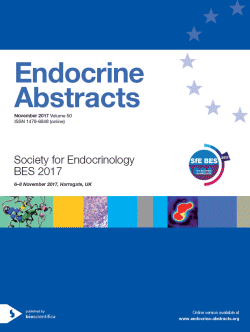Searchable abstracts of presentations at key conferences in endocrinology

Society for Endocrinology BES 2017
Harrogate,
UK
06 Nov 2017 - 08 Nov 2017

SfE BES 2017 will be on the 6-8 November 2016 in Harrogate, UK.



